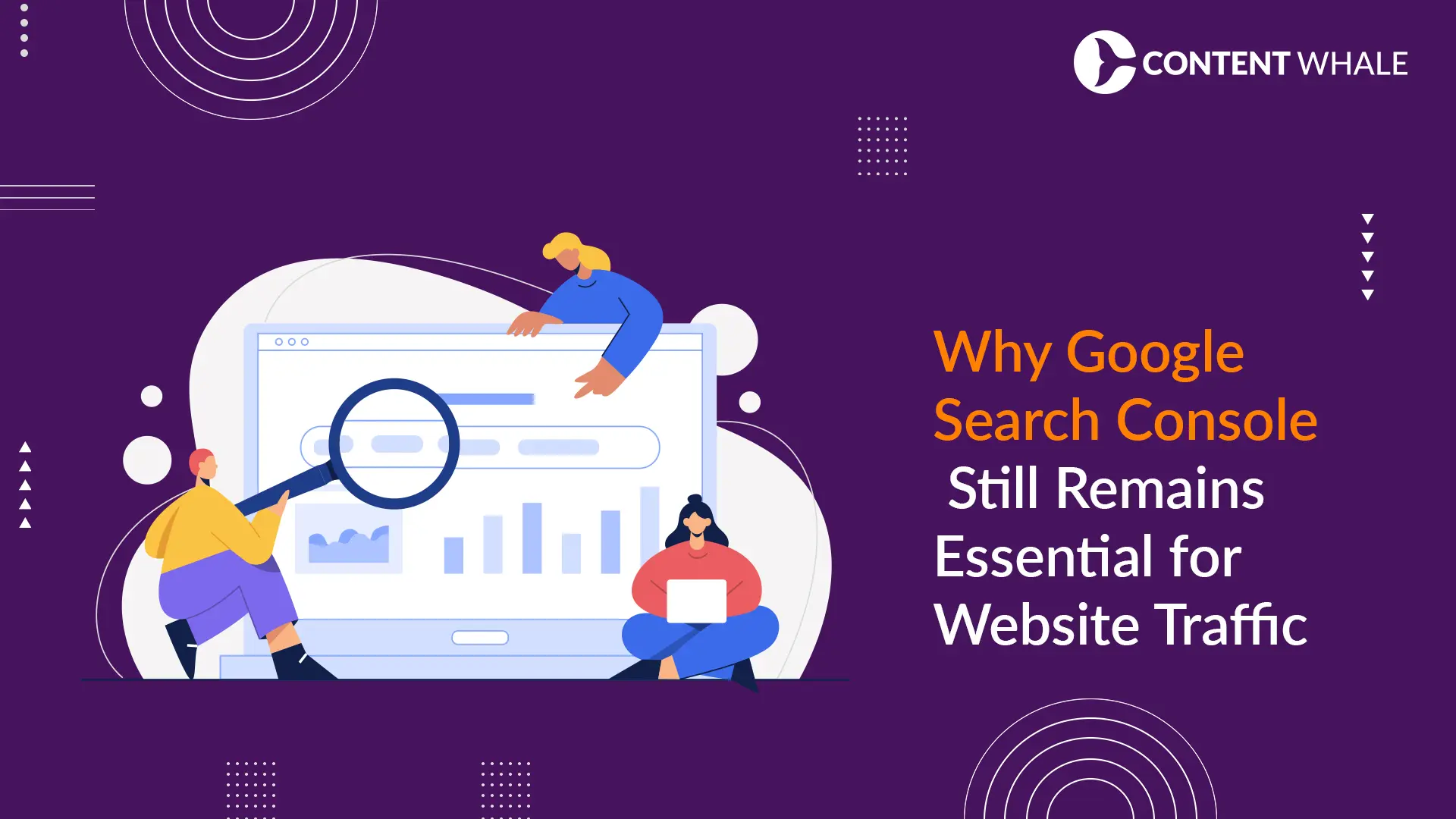Your Instagram reel gets 50,000 views. Your LinkedIn post receives 500 likes. Your Reddit comment sparks a discussion with 200 upvotes. Yet your website analytics tell a different story: 90% of your actual conversions come from Google search.
This isn’t an anomaly. It’s the reality that google search console data reveals daily.
The digital marketing landscape buzzes with excitement about social media platforms, short-form video content, and community-driven sites. Marketers pour resources into TikTok strategies, Instagram reels, and LinkedIn thought leadership. While these channels have their place, the data consistently shows that Google search remains the primary driver of qualified website traffic.
This guide will explore why search engine visibility continues to outperform social media marketing, examine what google search console metrics reveal about user behavior, and explain how businesses can optimize their presence where it matters most.
The Numbers Don’t Lie: Search vs Social Traffic

Website Traffic Statistics from Search
Google search console data provides irrefutable evidence of search dominance in driving website traffic. A comprehensive study analyzing data from thousands of domains and tens of billions of sessions found that organic search traffic accounts for 53% of all trackable website traffic, while social media collectively contributes just 5% (Source).
This pattern has remained consistent over multiple years, with organic search actually growing from 51% in 2014 to 53% in recent studies.
Key website traffic statistics from research:
- Organic search drives 53% of all website traffic
- Social media accounts for only 5% of total traffic
- Search visitors convert at rates 3-5x higher than social referrals
- Average session duration from search exceeds social by 2-3 minutes
Data from google search console confirms these patterns across thousands of websites. When users type queries into Google, they’re signaling explicit interest in finding information, products, or services.
This intentionality creates qualified traffic that social media algorithms struggle to replicate.
The gap widens when examining revenue attribution. Research indicates that organic and paid search are responsible for 72% of revenues for B2B and other verticals, while social media delivers less than 1% of revenue on average (Source).
Social Media Marketing Reality Check
Social media marketing delivers undeniable value for brand building, community engagement, and audience connection. However, its ability to drive sustained website traffic pales compared to organic search traffic from Google.
A LinkedIn post reaches peak visibility within 24-48 hours, then disappears into the feed abyss. An Instagram reel might trend for a week before becoming algorithmically irrelevant.
Meanwhile, a well-optimized blog post continues attracting search visitors for months or years.
Reality of social media traffic:
- Content lifespan measured in hours or days
- Algorithm changes can eliminate reach overnight
- Platform-dependent visibility you don’t control
- High effort-to-traffic ratio for sustained results
While social platforms report impressive engagement metrics (likes, shares, comments), these rarely translate to website traffic or conversions at rates comparable to search. Users scrolling social media are in discovery mode, not purchase mode.
Users typing queries into Google are actively seeking solutions, making them far more likely to engage meaningfully with your content.
Why Google Search Remains Supreme?

User Intent and Purchase Behavior
The fundamental advantage of google search console optimization over social media marketing lies in user intent targeting. When someone searches “best project management software for small teams,” they’re demonstrating explicit purchase consideration.
Compare this to someone scrolling LinkedIn who happens upon your sponsored post about project management.
Academic research on search engine optimization confirms that SEO strategies significantly influence marketing variables like market share, brand loyalty, brand recognition, and consumer online behavior (Source).
How user intent drives search superiority:
- Search queries reveal explicit needs and problems
- Users actively seeking information vs passively scrolling
- Higher cognitive engagement with search results
- Purchase-ready mindset differs fundamentally from social browsing
Using google search console allows businesses to identify which queries drive traffic, then optimize content to better serve those specific intents. This creates a virtuous cycle where better content attracts more qualified traffic.
Social platforms offer no equivalent insight into what users were thinking before they saw your content.
Long-Term Value vs Temporary Exposure
Search engine visibility compounds over time, while social media marketing requires constant content production to maintain reach. A single comprehensive guide optimized for search can drive website traffic for years with minimal updates.
Research examining SEO effectiveness through meta-analysis of studies conducted between 2022 and 2024 shows that implementation of SEO is consistently associated with significant increases in organic search rankings and website traffic, with an effect size value of 1.049 in the high effect size category (Source).
Long-term value comparison:
- Search content lifespan: 2-3 years average
- Social content lifespan: 24-48 hours average
- Cumulative traffic from one search post: 10,000-50,000 visits
- Cumulative traffic from one social post: 500-2,000 visits
Tracking performance through google search console allows measurement of this long-term impact. You can watch individual pages continue attracting traffic months or years after publication.
This evergreen nature of search content creates compounding returns that social media simply cannot match.
Understanding Search Console Data

Key Metrics That Matter
Google search console provides four primary metrics that reveal your search performance: impressions, clicks, click-through rate (CTR), and average position. These search performance metrics offer insights that social media analytics cannot provide: the actual queries people use to find your content.
- Impressions measure how many times your pages appeared in search results. High impressions with low clicks indicate your content ranks but doesn’t compel users to visit.
- Clicks represent actual traffic from search. The search console interface shows exactly which queries drove each click, allowing precise content optimization around terms that already work.
- Click-through rate (CTR) reveals the percentage of impressions that convert to clicks. The top result typically achieves 27-35% CTR, declining rapidly for lower positions.
- Average position shows where your pages rank for various queries. Position tracking in google search console helps identify optimization opportunities.
These search console metrics enable data-driven decisions about content strategy. You discover what actually works, not what you think works or what social media engagement suggests.
How to Leverage Search Console Insights
Google search console transforms from reporting tool to optimization engine when you understand how to extract actionable insights. Start by identifying pages with high impressions but low CTR, typically below 2-3% for positions 1-10.
Export queries for these pages from google search console and analyze the actual search terms.
Rewrite titles and meta descriptions to better align with these queries.
Actionable SEO optimization tools strategies:
- Filter for queries with position 8-20 and optimize targeted pages
- Identify high-impression, low-CTR pages and rewrite metadata
- Find content gaps where competitors rank but you don’t
- Track performance changes after optimizations
Use google search console to guide content creation decisions. Sort queries by impressions to identify topics with proven search demand, then create comprehensive content targeting those terms and related concepts.
The Social Media Illusion

Social media platforms create an illusion of reach that often doesn’t translate to business outcomes. A viral post with 100,000 impressions feels impactful, yet may drive fewer than 200 website visits.
Meanwhile, a blog post ranking for valuable search terms quietly delivers 1,000 targeted visitors monthly.
Algorithm dependency represents a critical vulnerability. Facebook, Instagram, LinkedIn, and TikTok continuously adjust their algorithms, often reducing organic reach to push paid promotion. Brands that built audiences of 100,000 followers find their posts now reach only 2-3% of that audience without advertising spend.
Hidden costs of social media dependence:
- Organic reach declining across all platforms
- Algorithm changes can eliminate visibility overnight
- Platform policy changes affect content reach
- No ownership of audience relationships
Engagement metrics (likes, shares, comments) measure attention but not intent. Someone liking your LinkedIn post might forget it within minutes.
Someone finding your content through Google search arrived with a specific question they want answered, creating deeper engagement and higher conversion probability.
Building Sustainable Visibility
Sustainable online visibility requires prioritizing channels that deliver long-term value. Google search console should be your primary diagnostic tool, not an afterthought.
Weekly monitoring of search performance metrics reveals trends before they become problems.
Academic research on search engine optimization emphasizes that strategic SEO approaches provide deeper insights into search engine user behaviors, ensuring more informed business decisions and robust digital presence (Source).
Essential practices for search rankings improvement:
- Monitor google search console weekly for performance trends
- Create comprehensive content targeting specific search queries
- Optimize technical SEO based on coverage reports
- Build backlinks from relevant, authoritative sources
- Update existing content to maintain rankings
| Strategy Element | Organic Search Optimization | Social Media Marketing |
| Content Lifespan | 2-3 years average | 24-48 hours |
| Traffic Contribution | 53% of total traffic | 5% of total traffic |
| Revenue Impact | 72% of B2B revenues | Less than 1% average |
| User Intent | Active search with purpose | Passive discovery |
| ROI Timeframe | Compounds over time | Requires constant investment |
| Conversion Rates | 3-5x higher | Lower engagement to conversion |
Content updates matter more than most realize. Google search console data shows which pages are losing traffic. Review and refresh this content every 6-12 months by adding new information, updating statistics, and improving comprehensiveness.
Track website traffic sources in analytics to understand your actual traffic composition. While diversification across channels makes sense, recognize that organic search likely drives the majority of qualified visitors.
How Content Whale Can Help
Content Whale’s SEO specialists understand that google search console data should drive content strategy. Our team creates comprehensive, search-optimized content that ranks for valuable queries and drives sustained website traffic.
We integrate google search console insights into every content strategy we develop for clients to deliver content that performs in both traditional search engines and AI-powered platforms, helping your brand establish thought leadership in the digital marketing space.
Conclusion
Social media marketing has its place in a comprehensive strategy, but the data is unequivocal: search console metrics prove that search visibility drives more website traffic, higher-quality visitors, and better conversion rates than social platforms.
Smart businesses recognize this reality and prioritize search engine optimization accordingly. While competitors chase viral moments and trending reels, you can build sustainable visibility through google search console-guided optimization that continues delivering results for years.
Ready to prioritize the channel that actually drives website traffic and conversions? Contact Content Whale today for SEO content strategies built on google search console data, not social media hype.
FAQ
Q1: How does website traffic from Google search compare to social media?
Research analyzing tens of billions of sessions found that organic search accounts for 53% of all trackable website traffic, while social media collectively contributes just 5% (Source). Search visitors also convert at rates 3-5 times higher than social media referrals. Google search console data from thousands of sites confirms these patterns.
Q2: What is Google Search Console and why does it matter?
Google search console is a free tool that shows exactly how your website performs in Google search results. It reveals which queries drive traffic, your search rankings for different terms, and technical issues affecting visibility. Search console provides data unavailable in standard analytics, making it essential for understanding and optimizing your search performance.
Q3: Can social media marketing replace SEO and search optimization?
No. While social media marketing builds brand awareness and engagement, it cannot replace search optimization for driving sustained website traffic. Meta-analysis research shows SEO implementation is consistently associated with significant increases in organic search rankings and website traffic with high effect sizes (Source).
Q4: What search console metrics should I monitor most closely?
Focus on four primary metrics in google search console: impressions (how often you appear in search), clicks (actual traffic), click-through rate (percentage of impressions that become clicks), and average position (where you rank). Pages with high impressions but low CTR need better titles and descriptions.
Q5: How long does it take to see results from search optimization?
Most websites see measurable improvements in google search console metrics within 3-6 months of consistent optimization. However, search optimization builds compounding value: content continues attracting traffic for years after publication. Track your progress through google search console reports to see this growth.





